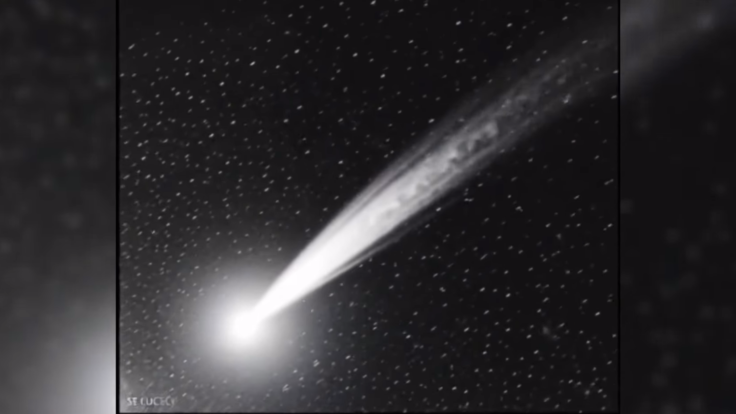Live From Italy: 3I/ATLAS Captured in Stunning Images — Astronomer Confirms 'Clearly a Comet'
Astronomer declares 3I/ATLAS 'clearly a comet' in stunning broadcast

Astronomers in Italy have captured striking live images of the interstellar object 3I/ATLAS, confirming beyond doubt that the cosmic visitor is a comet rather than anything artificial or exotic.
The 40-minute livestream, broadcast on 19 November by the Virtual Telescope Project, drew global attention as viewers watched a glowing nucleus, a distinct coma and a faint dust tail — all unmistakable signs of a comet passing safely through the solar system.
The event offered both scientific clarity and a rare moment of public wonder as an object from another star system swept across Italian skies.
Virtual Telescope Project Shows Comet Features In Real Time
The livestream, led by Italian astrophysicist Gianluca Masi, was broadcast from telescopes in Manciano and provided the clearest public view yet of 3I/ATLAS.
The images showed a bright nucleus surrounded by a coma, with a trailing dust tail — classic comet signatures recognised by astronomers worldwide.
During the broadcast, Masi stressed that the object's nature had been understood since its discovery in July 2025. However, the real-time visuals allowed the public to see the evidence firsthand.
'It is clearly a comet,' Masi said, dismissing the wave of online speculation that attempted to cast the object as an artificial craft or technological probe.
Third Confirmed Interstellar Visitor After 'Oumuamua And 2I/Borisov
3I/ATLAS is only the third confirmed interstellar object ever detected.
It follows:
- 1I/'Oumuamua (2017), which prompted widespread debate due to its unusual shape and acceleration
- 2I/Borisov (2019), the first interstellar object clearly identified as a comet
The Asteroid Terrestrial-impact Last Alert System (ATLAS) spotted 3I/ATLAS on 1 July 2025, and astronomers quickly determined it was travelling along a hyperbolic trajectory—proof that it is not gravitationally bound to the Sun and will never return.
Interstellar objects offer rare opportunities to study material formed around other stars, potentially billions of years ago.
Livestream Refutes Rumours Of Artificial Origin
Following the controversies and speculative theories surrounding 'Oumuamua, similar rumours briefly surfaced around 3I/ATLAS.
Masi addressed these claims directly: 'The cometary nature was pretty clear after it was discovered,' he said, adding that he was baffled by the persistence of alternative theories despite the object's obvious morphology.
The livestream, viewed by thousands, showcased features that artificial objects do not exhibit. No reputable scientific institution or peer-reviewed study has provided evidence suggesting the object is technological in nature.
What Scientists Hope To Learn From 3I/ATLAS
The object slipped out from behind the Sun's glare only recently, allowing observatories such as the Virtual Telescope Project to capture new data.
By analysing its light spectrum, researchers can:
- determine its chemical composition
- compare it with comets formed in the early solar system
- assess whether interstellar comets share similar origins across the galaxy
According to Space.com, the object is now moving away from the Sun and will soon fade from view as it leaves the solar system for good.
Global Public Engagement As Viewers Witness Interstellar History
The Virtual Telescope Project has become known for opening professional observations to the public, and the 3I/ATLAS broadcast was no exception.
Thousands tuned in from around the world, many expressing excitement at witnessing an interstellar visitor in real time.
The event blended science communication with spectacle, allowing amateurs and enthusiasts to share a moment that would otherwise be limited to observatory staff.
With the livestream now widely shared across social platforms, 3I/ATLAS has captured the public imagination — a fleeting cosmic traveller lighting up the night sky before disappearing back into deep space.
© Copyright IBTimes 2025. All rights reserved.




















